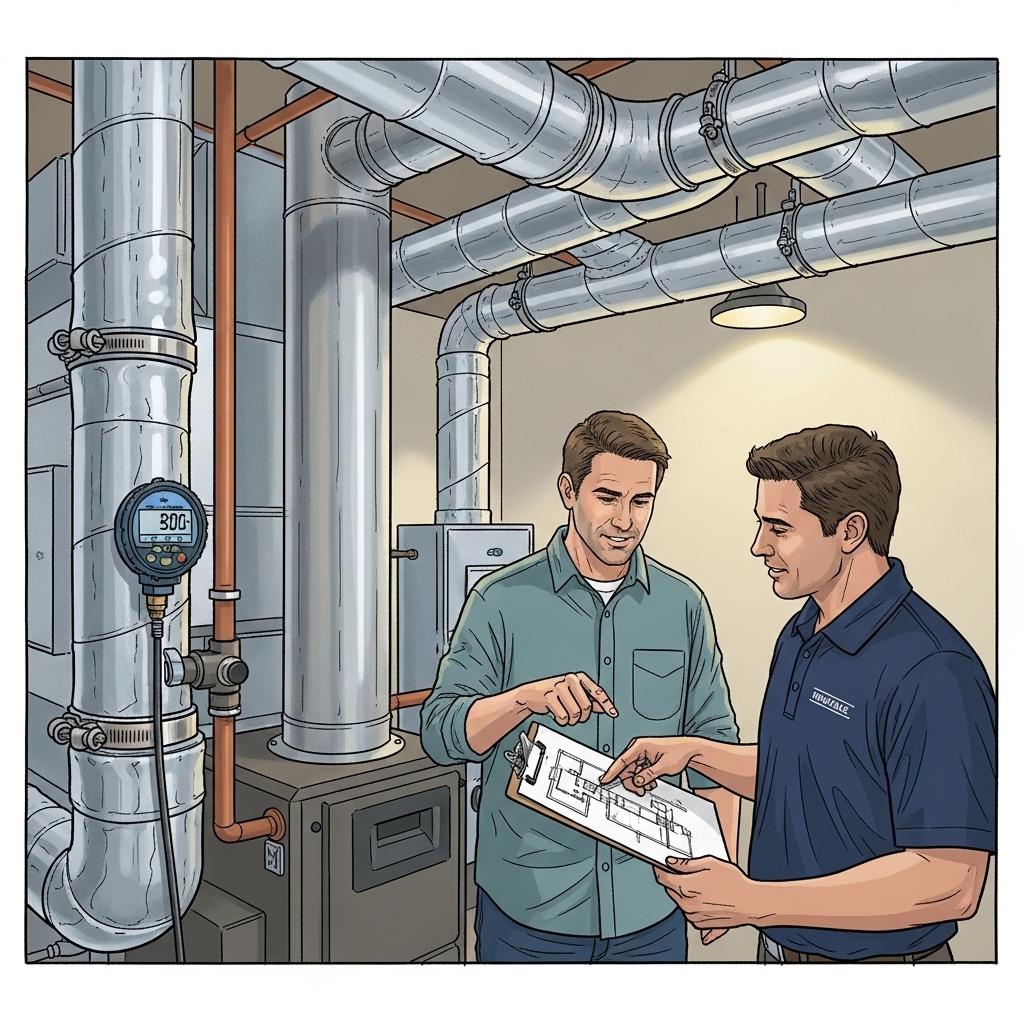Choosing the right HVAC duct replacement service in Malibu requires more than scanning reviews. Coastal conditions, hillside homes, and varied architecture mean your provider must be adept at design, installation, and local code compliance. This guide shows you how to evaluate candidates, what questions to ask, and how to recognize the signs of quality workmanship. Start by grounding your search in the fundamentals of duct replacement so you can compare providers on more than just convenience and availability.
In Malibu, success depends on the team you hire. The ideal provider blends technical expertise, clear communication, and on-site adaptability. They anticipate the realities of tight attics, coastal moisture, and wildfire particulates, and they build a design that maintains comfort, quiet operation, and clean indoor air.
What a Quality Provider Looks Like
Top-tier teams demonstrate excellence before they step on a ladder. Look for these traits during your initial outreach:
- Design-first approach: They confirm load assumptions, perform airflow calculations, and sketch routing options.
- Transparent scope: They explain materials, sealing methods, insulation levels, and balancing procedures.
- Local know-how: They understand Malibu’s permitting, inspection expectations, and environmental challenges.
- Documentation habit: They provide before-and-after measurements and a clear maintenance plan.
- References and portfolio: They can show past projects comparable to your home type and layout.
Questions to Ask During Consultations
Interviews separate marketing from mastery. Use these questions to probe their process:
- How do you determine room-by-room airflow targets, and how will you verify them?
- What materials do you recommend for my home’s conditions, and why?
- How will you address returns to prevent pressure imbalances when doors are closed?
- What is your plan for sealing, insulation, and support spacing in tight areas?
- How do you protect the home during removal and installation?
- What documentation will I receive at the end of the job?
Red Flags to Avoid
Some warning signs indicate a provider may not deliver the results you want:
- Skipping design or relying solely on equipment size for airflow assumptions.
- Vague answers about sealing and insulation methods.
- Resistance to balancing and final measurements.
- Lack of experience with permitting or inspections in Malibu.
- Minimal attention to home protection and cleanup practices.
Site Assessment: What Should Happen
A thorough site visit reveals the realities that shape your project. Expect the provider to examine equipment, measure static pressure, photograph key areas, and assess access to attics and crawlspaces. They should note any signs of moisture, corrosion, or wildlife activity. If rooms are chronically warm or cool, they should look for restrictive branches, tight elbows, or undersized returns that explain the imbalance.
Design and Material Selection
Your chosen team should propose a design that prioritizes smooth airflow and balanced returns. Material choices often include a combination of rigid metal for main trunks and short, properly supported flex for tight connections. In coastal environments like Malibu, corrosion-resistant fasteners and meticulous sealing protect longevity. Insulation must cover all exposed runs, including boots and penetrations.
Noise control deserves attention. Diffuser selection, transition shapes, and velocities all matter. If you have a home office or media room, flag these as priority spaces where quiet operation is essential.
Balancing and Verification
Balanced airflow is the finish line. Your provider should plan to measure supply and return flows, adjust dampers, and verify static pressure. The final packet should include readings that confirm even distribution. This step is where design becomes reality; skipping it leads to persistent hot and cold spots.
Permitting, Codes, and Inspections
Local compliance ensures safety and performance. Providers experienced with Malibu’s process can anticipate inspection points: support spacing, sealing methods, insulation levels, and access provisions. When a team welcomes inspections and prepares documentation, it is a good sign they value accountability.
How Providers Manage the Worksite
Professional crews protect floors and furnishings, contain dust, and stage materials to minimize disruption. They establish pathways to attics and mechanical rooms, keep a tidy site, and communicate daily milestones. Ask about cleanup standards and where registers and grills will be stored during the job to avoid damage.
Comparing Proposals the Smart Way
Evaluate proposals based on clarity and completeness, not just scope headlines. A strong proposal spells out materials, sealing and insulation tactics, support spacing, diffuser types, and a plan for balancing. It should also include a realistic schedule and describe how mid-project discoveries will be handled.
Mid-Project Adaptability
Once old ducts are removed, the team may find better routes or structural realities that require changes. Experienced providers build in decision checkpoints, discuss trade-offs, and keep you informed. A flexible plan prevents last-minute compromises that could affect performance.
Maintenance Guidance
After installation, you should receive a clear maintenance plan: filter sizes and change intervals, signs to watch for at returns, and recommendations for periodic checks after major weather or smoke events. Your provider should also advise on how to maintain airflow and cleanliness without voiding equipment warranties.
Frequently Asked Questions
Q: How do I know if a provider truly balances airflow?
A: Ask for sample reports from past projects and request a plan for measuring supply and return flows in your home. Verification is a hallmark of quality.
Q: Can I reuse some existing ducts?
A: Sometimes. They must be inspected for size, condition, and compatibility. Reusing sections that are restrictive or deteriorated can undermine results.
Q: What materials reduce noise?
A: Smooth transitions, adequate return capacity, and diffuser choice often matter more than any single material. In some cases, lined metal can help on specific runs.
Q: How does Malibu’s environment affect ducts?
A: Moisture, salt, and wildfire particulates call for robust sealing, proper insulation, and corrosion-resistant fasteners. Access challenges also influence routing and support spacing.
Q: Should I coordinate other work with duct replacement?
A: Yes. If you plan attic insulation upgrades, electrical work, or ceiling repairs, coordinate schedules to streamline access and reduce disruption.
Checklist: Choosing the Right Provider
- Design and airflow calculations included.
- Clear materials and methods for sealing and insulation.
- Plan for balancing with documented results.
- Experience with Malibu permits and inspections.
- Strong references and project photos for similar homes.
- Defined cleanup, protection, and communication standards.
From Shortlist to Decision
After interviews and proposals, compare how providers translate your goals into a buildable plan. Prioritize the teams that demonstrate design rigor, transparency, and local experience. Quality ductwork is the quiet foundation of comfort; the right provider builds it to last.
Ready to Move Forward
If you are prepared to choose a team, start with a thorough assessment and a clear design that aligns with Malibu’s coastal conditions. Confirm balancing and documentation are included, and set expectations for site protection and communication. To take the next step with clarity, review professional duct replacement options and schedule a consultation focused on your home’s layout, comfort goals, and noise priorities.

